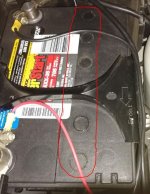- Joined
- Dec 7, 2021
- Messages
- 342
Just for clarity, since I know some who might read this post might confuse them. Bottled drinking water is NOT distilled water. Bottled water comes from many sources but one thing they have in common is added or naturally included salts and minerals. That is what gives it taste.
A Distilled water container will clearly say distilled and you would not find it drinkable - the lack of minerals makes it taste horrible. Distilled water is surprisingly corrosive to metals and glass at elevated temperatures.
A Distilled water container will clearly say distilled and you would not find it drinkable - the lack of minerals makes it taste horrible. Distilled water is surprisingly corrosive to metals and glass at elevated temperatures.

